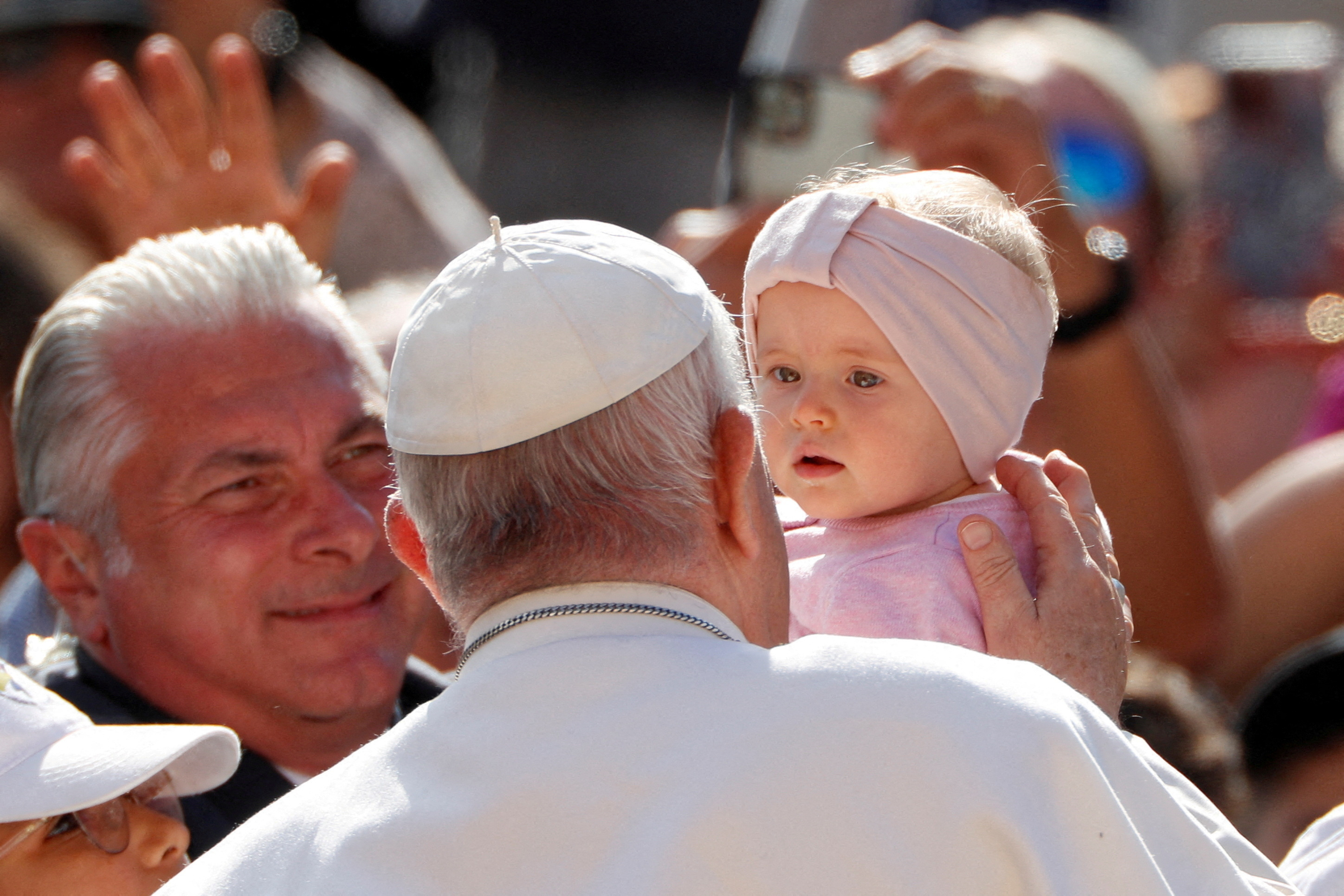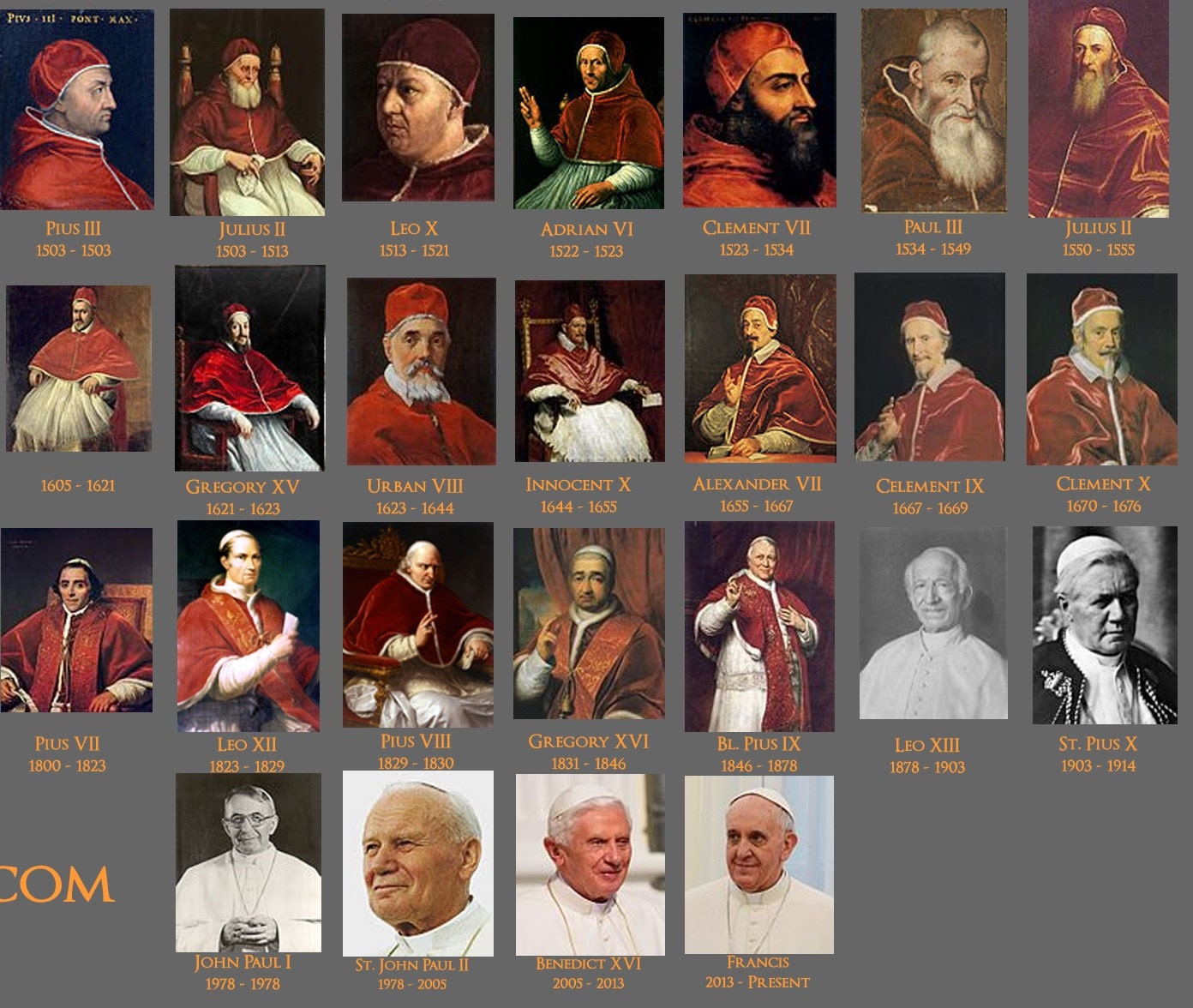Did the pontiffs of the Catholic Church, sworn to celibacy, father children? The historical record, often obscured by dogma and the passage of time, reveals a complex and sometimes surprising reality: the answer, in many instances, is a resounding yes.
The question of whether popes have had children is a fascinating, albeit often uncomfortable, exploration of the intersection between faith, power, and human nature. While the official stance of the Catholic Church, throughout its history, has been unwavering on the matter of celibacy for its clergy, the historical narrative paints a more nuanced picture. The sanctity of the papacy, steeped in tradition and moral authority, has, at times, been challenged by the very human desires and actions of the men who have held the highest office within the Church. The pursuit of historical truth often necessitates a willingness to confront uncomfortable facts, to acknowledge the imperfections of individuals, and to disentangle the narratives of faith from the complexities of lived experience.
The emergence of letters, such as those attributed to Pope John Paul II, offers a glimpse into the personal lives of these figures, challenging the public perception of them as solely spiritual leaders. These documents, revealing an extraordinary relationship with a married woman spanning over three decades, raise questions about the nature of such relationships and their potential impact on the papacy. However, it's crucial to consider the context and possible biases when evaluating such claims, as historical accounts can be subject to various interpretations.
- Sophie Rain Spiderman Video What You Need To Know Latest Updates
- Cherokee Dass Wiki Age Biography More Unveiled
The following table provides biographical information on some key Popes who have been the subject of historical scrutiny regarding their personal lives. This information is intended to provide a factual basis for understanding the context of the discussions surrounding the papacy and celibacy.
| Attribute | Details |
|---|---|
| Full Name | Karol Jzef Wojtya |
| Born | May 18, 1920, Wadowice, Poland |
| Died | April 2, 2005, Vatican City |
| Papacy | October 16, 1978 April 2, 2005 (26 years, 5 months, 17 days) |
| Notable for | Extensive travels, contributions to the end of the Cold War, canonization of numerous saints, the revelation of the Third Secret of Fatima. |
| Controversies | Allegations of covering up sexual abuse within the Church, the nature of his relationship with a married woman, the complexities of his theological views. |
| Reference Website | Vatican Official Website |
The revelations surrounding the "Third Secret of Fatima," made public by Pope John Paul II in 2000, offer another layer of complexity to this historical exploration. The Congregation for the Doctrine of the Faith stated that the revelation brought an end to a period of history marked by human lust for power and evil, yet pervaded by the merciful love of God. The interpretation of the secret, however, remains a subject of debate, with skeptics questioning its exact meaning and relevance. The historical context and the individuals involved, like Sister Lucia, who was the recipient of the Marian apparitions, remain crucial to understand this event and its impact.
Questions have arisen regarding the historical accuracy of accounts, like the mention of Pope Pius XI in the context of the Fatima apparitions. Since, Ambrogio Ratti did not adopt the name Pius XI until after his election in 1922, several years after the reported apparitions in 1917, it is vital to be discerning about historical timelines and naming conventions when interpreting historical events.
- Darrell Miklos Coopers Treasure Bermuda Triangle Ufos The Full Story
- Unlock Wordtunes Ai Power Writing Summarizing More
The timeline of historical events is also vital to be aware of. For instance, the European portion of World War II is generally considered to have begun on September 1, 1939, by which point Pope Pius XII had succeeded Pius XI. The progression of events like these allows for a clearer comprehension of how papal leadership and significant global shifts have coincided.
It's also important to acknowledge that the interpretations of historical events can vary significantly. What Pope Francis said on "60 Minutes" provides an example of how statements can be received with surprise. While Pope Francis's words might not have been so surprising, depending on one's point of view, it highlights the potential for differing perceptions. This can be seen in the "What Pope Francis Really Said" game which is a reflection of the varied interpretations of papal statements and actions.
The historical record reveals that some Popes, like those in the Borgia family, actively concealed their offspring. It was often easier for supporters to accept what were essentially lies, providing a layer of deniability when needed. This contrasts with the official stance of the Church regarding celibacy and the historical reality of papal families. Even in cases where the Church's stance has been clear, individual Popes made different choices.
The historical record also demonstrates the elusive nature of truth. As the historian Robert Winks articulated, "the past was real, but truth is relative." This notion emphasizes that truth is not always directly accessible, and interpretations of historical events are often influenced by the observer's perspective and the available evidence.
The Children's Crusade of 1212, a tragic event, serves as a stark reminder of the potential for misguided actions in history. Although Stephen, a figure in the Crusade, was a real historical figure, much of the truth behind the movement remains elusive. The lack of clarity underscores the importance of scrutinizing the source of the narrative, as historical context and bias can play a vital role in how history is understood. It's also essential to explore the nuances and contradictions within the Church's history, even the ones that challenge the commonly accepted ideas.
Despite the Church's official stance on sexual relations and celibacy, several Popes in the Middle Ages and the Renaissance fathered illegitimate children. This demonstrates a stark divergence between the stated ideals and the actions of those in power. Others, conversely, enjoyed the pleasures of life perhaps more than they should have. These examples highlight a gap between the norms of religious teachings and the reality of human behavior. The history of the papacy provides numerous cases of individuals who, while in positions of power, defied their vow of celibacy. These examples serve as reminders of the complications and contradictions that have characterized the history of the papacy.
Many popes did, in fact, have children, frequently breaking the celibacy rule. Some Popes are even known to be the sons of preceding Popes. The notion of lineage and power demonstrates the complexities within the institution. It is also useful to analyze how these personal ties could affect politics and Church policy.
The revelations surrounding prophecies and events, such as the one revealed in 1941 that World War I would end but be followed by a new, more disastrous war, underline the significance of contextualizing historical events. Understanding the circumstances of these prophecies is crucial to interpreting them correctly. These events should be studied in conjunction with the individuals who made them, and how they would affect those times.
Historical documents, such as the last letter from Mary Queen of Scots to Pope Sixtus V, exhibited in the Vatican Secret Archives in 2012, highlight the intersection of political and religious power. These documents show the complexity of historical relationships and the value of investigating primary sources.
Over almost sixty years in the 1800s and 1900s, Popes declined to leave the Vatican. During that period, Popes held authority over a group of sovereign papal states throughout central Italy before the country was unified. This highlights the temporal authority the papacy once held and the changes it has experienced over time.
The publication of the Third Secret of Fatima in the year 2000, by Pope John Paul II, is significant because it makes a complex historical event available for public scrutiny. It shows how internal Church matters can evolve and become subjects of widespread debate.
Additionally, historical narratives must include the social aspect, as highlighted by the elderly, who have bridged gaps between generations. Historical context also shows the power of intergenerational relationships. For example, the statement "the crown of the aged is their children's children" is useful to appreciate the historical and cultural importance of families and their connections.
The Eye of Providence, which the Founding Fathers added to the Great Seal to represent God's watchful presence over the new republic, is a metaphor for the interplay of religion and governance in the course of history. As represented by the pyramid with its 13 levels, this symbology shows how complex historical events are. These narratives show the enduring power of symbolism and belief in shaping historical views.



Detail Author:
- Name : Dr. Conner Labadie MD
- Username : bortiz
- Email : angelo.sipes@jones.com
- Birthdate : 2006-05-02
- Address : 34532 Dante Land Isobelhaven, VA 73180-1553
- Phone : (319) 626-9806
- Company : Veum, Monahan and Spinka
- Job : Prosthodontist
- Bio : Laborum doloremque fuga accusantium eum qui natus distinctio. Tempora dolor voluptatibus cum dolorum eos velit consequatur quos. Nulla est maiores rerum et.
Socials
linkedin:
- url : https://linkedin.com/in/morissette1976
- username : morissette1976
- bio : Sit exercitationem sit suscipit qui.
- followers : 3113
- following : 293
tiktok:
- url : https://tiktok.com/@ilianamorissette
- username : ilianamorissette
- bio : Et sapiente laudantium ut quaerat est vel.
- followers : 6870
- following : 1740